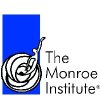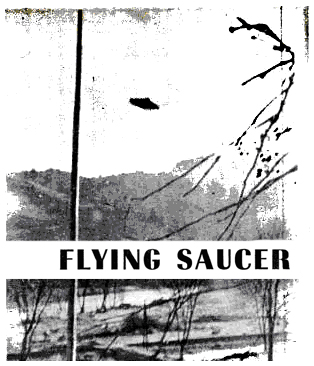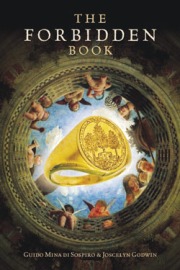Curious about Santa Muerte?

The Eyeless Owl
- The Eyeless Owl focuses on those fecund and fruitful interstices where fact and fiction commingle to recreate the world. Join us in our active exploration of the outer edges of society and mind.
A Simple Question…
From our friends at Red Wheel/Weiser
-
Recent Posts
- Residual Transmissions – A Radio Play Starring the Cold War Ghosts of North Georgia
- The Georgia Guidestones Expedition – Exploring America’s Nuclear Dreamspace
- Reflections on Wikipedia from Russell Targ
- Remote Viewing, Reality, and the Human Condition: Reflections on a Weekend with Russell Targ
- “Till immersed in that mighty ocean”: Perils of Awakening in a Universe of Hungry Ghosts
- Friends of The Eyeless Owl












Archives
- May 2014
- April 2014
- March 2014
- February 2014
- November 2013
- October 2013
- September 2013
- July 2013
- May 2013
- April 2013
- January 2013
- November 2012
- October 2012
- September 2012
- August 2012
- July 2012
- June 2012
- April 2012
- March 2012
- February 2012
- September 2011
- August 2011
- July 2011
- June 2011
- May 2011
- April 2011
- March 2011
- February 2011
- January 2011
- December 2010
- November 2010
- October 2010
- August 2010
- July 2010
- June 2010
- May 2010
- April 2010
A Serious Inquiry into the Vulgar Notion of Nature
Our Other Exploits
Sublimate Your Errant Time
- Ad Astra, Et Cetera
- Avalonian Aeon – Blog Talk Radio
- Avalonian Aeon Publications
- Cold Albion
- Edge of Tomorrow
- Evolutionary Landscapes
- Free Music Archive
- George P. Hansen
- HiLoBROW
- Library ad Infinitum
- Metalhead Takes the Square
- Modern Mythology
- Mystery Theater
- Mystical Inklings
- Noun/Verb
- Occult of Personality
- Single Eye Movement
- Techgnosis
- The Absent Narrative
- The Gold Root
- The New Post Literate
- The Revealer
- The Valentines
- Ubuweb
- Weaponized
Categories
Stay in Touch
Monthly Archives: March 2011
Testimony of the Symbols
“…in a light of awakening she gave us her testimony of the symbols.”
Testimony of the Symbols, by Seance & the Sidereal Stone
Manipulated Banjo & Tin Whistle
Posted in Mytho-Poesis
Paranormal America – Curiosities in Religion & Culture

“As psychical research evolved into parapsychology, the
emphasis shifted from the descriptive phenomenology of concrete psi experience to the promise of decisive proof furnished by controlled experiment. Thereby, the nature and meaning of “nature” was itself transmuted.No longer appreciated as immediate felt and sensed quality,nature was reduced to the category of sheer abstract quantity. The new assumption was that only the experts could understand nature and properly interpret its signs and (mathematical) formulae. Furthermore, only those adepts capable of producing effects on demand would be of interest to researchers. Psi was thus removed from its native (public) habitat of everyday life and, like some rare specimen of exotic fauna, confined to the tightly controlled environment of private zoos, the exclusive property of an élite cohort of scientific experts and psychic celebrities.”
– Joseph M. Felser, Philosophical Sensitives and Sensitive Philosophers: Gazing into the Future of Parapsychology
Dogmatism dots the line when it comes to investigating the unseen dimensions of life. Skeptics and believers both muddy already murky water when they force their hand on hypotheses that support preconceptions rather than open the door for honest inquiry.
For nearly a century psychologists argued over the existence of lucid dreaming, when it was always in their ability to simply try the recommended techniques (which are relatively simple) for achieving that state. Even today lucid dreaming is considered a “possibility” rather than a straight fact despite the prevalence of evidence as well as testimony of a multitude of practioners. The concept of lucid dreaming complicated the behaviorist paradigm that provided the basis for much of the 20th centuries economic and industrial philosophies, so it was inconvenient and brushed aside.
On the opposite end we find enthusiasts that use base line phenomenon, such as lucid dreaming, to provide evidence for unverifiable (and often incredibly fantastic) metaphysical and cosmological theories. When the debate over anomalous phenomenon only bounces between these two sides it becomes as ridiculous as the faith vs. reason debates when posed by fundamentalist or creationist groups and radical atheists.
As Professor Joseph M. Felser points out in his article Philosophical Sensitives and Sensitive Philosophers: Gazing into the Future of Parapsychology, the original methodology of groups such as the Society for Psychical Research was more in terms of sociological or anthropological investigations. Collecting data, including subjective experiences, was the basis for understanding the anomalous phenomenon and allowed for the investigations to meet the phenomenon where it was active.
This approach allows some ability to avoid the pitfalls of theorizing a meaning before relating to the experience itself. When anomaly research is justified on the basis of industrial application and results, it’s impossible to honestly investigate the phenomenon.
Chicago anomaly investigator Howard Heim ran a popular ‘Ghost Tour’ in order to privately fund his research. This allowed him the freedom to approach his investigations without expecting cash compensation. When faced with a situation where the anomaly was nothing more than a glass of vodka and a vivid imagination he was given an opportunity to better understand what constitutes potential explanations for reported experiences, something to rule out next time. When there’s money in question, such as with the Stanford PSI experiments, too many of these kinds of disappointments shut down research.
 The power of the anomalous is not in it’s profitability, but rather it’s ability to lead to realization. Joseph Feltzer points to the fact that in the past philosophers such as Socrates (and Peter Kingsley would add Parmenides, Empedocles, and Pythagoras) were the ones whose interactions with what is presently called the paranormal lead to the creation of Western civilization. Mystery is the matrix of creation, it verifies our cultural myths, imports meaning and movement to time, and provides the ground for communion with the interplay of life and death.
The power of the anomalous is not in it’s profitability, but rather it’s ability to lead to realization. Joseph Feltzer points to the fact that in the past philosophers such as Socrates (and Peter Kingsley would add Parmenides, Empedocles, and Pythagoras) were the ones whose interactions with what is presently called the paranormal lead to the creation of Western civilization. Mystery is the matrix of creation, it verifies our cultural myths, imports meaning and movement to time, and provides the ground for communion with the interplay of life and death.
“The fear of ridicule and the anxious silence that grows out of that fear, insidiously spreading itself like a metastasizing cancer, are potent obstacles to a genuinely rational inquiry. In theory, science should welcome anomalies as the harbingers of new discoveries. The scientific intelligence should derive joy from being surprised by new and hitherto unexplained phenomena. After all, isn’t that what science is all about?”
– Joseph M. Felser, Outsiders, Anomalies, and the Future of “Forbidden Science”
 Fortunately a few intrepid sociologists have taken it upon themselves to brave the ridicule and present a collection of baseline data that brings an interesting angle to the field of anomaly research. In Paranormal America: Ghost Encounters, UFO Sightings, Bigfoot Hunts, and Other Curiosities in Religion and Culture, Christopher Bader (Baylor Univ.), F. Carson Mencken (Baylor Univ.), and Joseph Baker (East Tennessee State Univ.) have used the data from the Baylor Religion Survey, and relevant field work, to provide a demographic profile of paranormal beliefs in the United States.
Fortunately a few intrepid sociologists have taken it upon themselves to brave the ridicule and present a collection of baseline data that brings an interesting angle to the field of anomaly research. In Paranormal America: Ghost Encounters, UFO Sightings, Bigfoot Hunts, and Other Curiosities in Religion and Culture, Christopher Bader (Baylor Univ.), F. Carson Mencken (Baylor Univ.), and Joseph Baker (East Tennessee State Univ.) have used the data from the Baylor Religion Survey, and relevant field work, to provide a demographic profile of paranormal beliefs in the United States.
This is not a book that addresses anomalies or outre phenomenon in themselves, rather it is an in depth look at the statistical demographics for paranormal belief and it’s relation to race, gender, social class, and religious beliefs. The areas covered are limited to the popular understanding of UFO’s, ghosts, professional psychics, and cryptozoology, each explained through specific field work that the authors undertook.
The strength of Paranormal America lies in it’s ability to avoid joining the debate on either extreme. Reporting the field work in a straightforward manner, the book allows for the statistics to stay in the foreground.
For all sides with an interest this presents a valuable picture of factors attending belief in, and claims of experiences with, anomalous phenomenon. For parapsychologists and researchers this data is a useful tool for understanding the sociological factors that surround the phenomenon. This broad spectrum of data is the first of its kind, and represents the most in depth statistical analysis of paranormal beliefs and experiences in the United States.
Using the language of economy and marketing the book approaches the paranormal from a purely demographic perspective. The book focuses on statistical averages, even in conducting the field work itself. For instance, rather than immerse themselves in the culture of former military intelligence assets, professional remote viewers, or scientists who have participated in psi research, the authors go to a Texas psychic fair and immerse themselves in commercial clairvoyance and astrology. This middle road serves the book well in it’s purpose, providing a good picture of the U.S. paranormal market, and leaves deeper investigation to the numbers themselves.
Their field work with Pentecostal and Holiness congregations provide excellent alternatives to the focus on secular phenomenon. The relationship between paranormal beliefs and religious beliefs forms a main component of the book’s analysis. A historical approach may disspell some of the authors conclusions, but the statistical data brings attention back to the original methods of phenomenal investigation and that gives a great value to the work.
Adding a deeper qualitative element to each of the categories the book covers, and getting into the correspondences from the other areas of the Baylor Religion Survey will be the work of subsequent investigators. As it stands Paranormal America provides a good base line for future research.
Note: Thanks to New York University Press for providing a copy of Paranormal America for research and review.
Yesterday’s Impossibilities – Tomorrow’s Proven Facts: How to Achieve Clairvoyance & Occult Powers
 William Walker Atkinson is a fascinating persona in the history of American esoteric ephemera and parapsychology. Ass0ciated with the Yogi Publication Society and Advanced Thought Publishing in the early 20th Century, he wrote a surprising array of work under various pseudonyms on the more occult aspects of the New Thought movement. Along with Atkinson’s numerous identities, the Yogi Publication Society also put out works by A.E. Waite, Jacob Boehme, Frater Achad, Paschal Beverly Randolph and Charles Gottfried Leland (the author of Aradia – The Gospel of Witches).
William Walker Atkinson is a fascinating persona in the history of American esoteric ephemera and parapsychology. Ass0ciated with the Yogi Publication Society and Advanced Thought Publishing in the early 20th Century, he wrote a surprising array of work under various pseudonyms on the more occult aspects of the New Thought movement. Along with Atkinson’s numerous identities, the Yogi Publication Society also put out works by A.E. Waite, Jacob Boehme, Frater Achad, Paschal Beverly Randolph and Charles Gottfried Leland (the author of Aradia – The Gospel of Witches).
Atkinson had a penchant for the more occult oriented objectives of the positive thinking movement, specializing in telepathy, clairvoyance and similarly outer phenomenon. Yet his focus on bringing this information to the public lead to a number of popular self help and success titles aimed at a wider audience. He was an active popularizer of the “power of positive thinking” technique recently reveiled via Rhonda Byrne’s The Secret. Anyone delving into his oeuvre, however, will find that the thin trickle of truth that may dance around in Byrne’s revival is nothing compared to the extensive ocean of accessible practical mysticism that Atkinson included in his works. It is interesting to see material from Atkinson which varies very little from later advances in practical psychicism developed by groups like the Standford Research Institute during their contracted work with the U.S. intelligence community.
Atkinson’s approach has always held a sense of sincerity that his progeny find sorely lacking. Where their work often comes off with the faint scent of confidence trickery, the genuine flicker of a gnosemic flame shines through the heavy handed marketing that accompanies his extensive output. His business savvy is a charming accessory to explorations of the deeper aspects of consciousness, rather than the uncomfortable accoutrement we find in today’s pop culture pedantry.
Such an inspired touch comes from a wider range of reference. Forget about a book on successful business craft being dull when the author has a head full of clairvoyance, spiritualism, psychometry and American Rosicrucianism. He also had the good sense to actually come into contact with those active in the hidden side of his interests, such as members of the Golden Dawn, as well as more orthodox proponents of heterodox ideologies such as Tantra and Christian mysticism.
The Yogi Publication Society ran it’s mail order operations from a number of different locations in Chicago. One of Atkinson’s most effective publishing techniques was to use different company names to approach different audiences and topics. For a number of years his publishing ventures shared the address of fellow New Thought publisher Sydney Flowers’ Psychic Research Company. 3855 Vincennes Ave., Chicago, where the Psychic Research, Co. was headquartered is now a mix of decaying factory buildings and new condominiums. The area’s confused and crumbling facade holds a history that is much more potent than mere appearance would suggest. In this is mirrors Atkinson’s own work.
An interesting aspect of the complex web of authenticity and advertising excess that he created is his interplay with the Society for Psychical Research. The Journal of the Society for Psychical Research is one of Atkinson’s favorite sources to scientifically explain the occult psychism that is the main focus of his writing.
This penchant can be demonstrated in a brief excerpt from his book, Telepathy – It’s Theory, Facts and Proof:
“So far as the subject of modern Telepathy is concerned we may as well assume that Telepathy had its birth into modern scientific thought at the time of the formation of the English Society for Psychical Research in 1882. One of the stated objects of the said Society was to conduct an examination into the nature and extent of any influence which may be exerted by one mind upon another apart from any generally recognized mode of perception. While the latter years of the Society’s existence has been devoted principally to an investigation of the phenomena of clairvoyance, spirit return, trance mediumship, etc. its first decade was almost entirely devoted to the investigation of telepathy, thought transference, and similar phenomena. The early experiments of the Society have been fully reported and these reports which comprise several volumes have given the world a record of psychic phenomena of the greatest value to science.
The celebrated Sidgwick experiments conducted under the auspices of the Society for Psychical Research in 1889 and 1890 excited great interest in scientific circles. and placed the subject of Telepathy upon a basis which science could not afford to refuse to perceive. And the result has been that many careful scientists have freely acknowledged that ‘there may be something to it,‘ some going so far as to openly advocate Telepathy as an established scientific fact, although there are many scientists who still adhere to the opinion that Telepathy remains to be proven scientifically, while some of the ultra conservatives go so far as to insist that Telepathy is scientifically impossible, this latter opinion being calculated to cause a smile to one who remembers how many ‘scientifically impossible‘ things have afterward been proven to be not only scientifically possible. or probable. but also actually existent. It is either a very bold man. or else a foolish one. who in these days can positively assert that anything is scientifically impossible. In this connection one is reminded of the learned body of scientists who sitting in conference solemnly decided that it was scientifically impossible for a vessel to cross the ocean by the power of steam. While the decision was being recorded on the minutes the word was received that a steamship had actually made the voyage across the ocean and was that moment entering the harbor. One also recalls the story of the eminent English scientist who had for a lifetime positively disputed the possibility of certain facts and who in his old age when asked to witness the actual demonstration of the disputed fact refused to look into the microscope for the purpose and left the room angrily shaking his head and saying ‘It is impossible!’ Yesterday’s impossibilities are often tomorrow’s proven facts.
Atkinson’s references to his scientific contemporaries run as strange counter points to reviews in the same journals which he quotes from. While he was glowing in his citations of the SPR, they were often less enthusiastic about a number of books put out under his authorship, calling into question the veracity of his claims.
Considering Atkinson’s use of pseudonyms, ghost written personas, and created characters, we find a perfect example of George Hansen’s theory of the ‘trickster and the paranormal.” On one side Atkinson is using the veracity of the SPR’s journal to back his practical advice on psychic development, along with what can honestly be said to be a fully engaged understanding of his subject matter. At the same time, Atkinson dissolves that veracity through his pseudonymous publishing efforts that slip past the critical analysis of the SPR, and the romantic associations he uses to promote his work.
To dismissing him outright doesn’t do justice to the riches that can be found in his bibliography. Few have extended such an open invitation to exploring the vigorous realm of practical psychism, and none have been as steady focused in providing simple, every day advice on developing the fine art of advanced mentalism. Rather than abandon him as a curiosity of the past, I personally prefer to join him in exploring ‘yesterday’s impossibilities,’ in search of ‘tomorrow’s proven facts.’
Red Wheel/Weiser has put out a reprint of Atkinson’s Clairvoyance & Occult Powers, with a great introduction to Atkinson by Clint Walsh of Wonderella Press. Reading the review copy inspired this brief animated ode to Atkinson and the grandeur of mail order esotericism:
“Written by a Master of Occult Science you are given a full and complete explanation, in plain, simple, easily understood language for the development and manifestation of Occult Powers…
Including –
Clairvoyance
Clairaudience
Premonition & Impressions
Clairvoyant Psychometry
Clairvoyant Crystal-Gazing
Distant Clairvoyance
Past Clairvoyance
Future Clairvoyance
Second-Sight
Prevision
Clairvoyant Development
Astral-Body Traveling
Astral-Plane Phenomena
Psychic Influence – Personal & Distant
Psychic Attraction
Psychic Healing
Telepathy
Mind-Reading
Thought Transference and other
Psychic Phenomena!”
___________________________________________________
The Eyeless Owl presents –
How to Achieve Clairvoyance & Occult Powers,
for William Walker Atkinson,
Pseudonymous Pioneer of Advanced Thought.
Note: Special thanks to Red Wheel/Weiser for providing a review copy of Clint Marsh’s reprint of Atkinson’s Clairvoyance & Occult Powers.
Posted in Mytho-Poesis
Tagged A.E. Waite, Advanced Thought, Charles Godfried Leland, Chicago, Clairvoyance and Occult Powers, Frater Achad, George Hansen, Jacob Boehme, Mentalism, Mind Science, New Thought, Paschal Beverly Randolph, Psychic Research Company, Red Wheel/Weiser, Society for Psychical Research, Swami Panchadasi, Sydney Flower, William Walker Atkinson, Yogi Publishing


 “Will you turn to ridicule the experience I have acquired with so much dilligence?”
“Will you turn to ridicule the experience I have acquired with so much dilligence?” The struggle between proponents of the Mystery and of technique stretches back into prehistory. It can be seen in the split between the mathēmatikoi ( Μαθηματικοι – “learners”) and the akousmatikoi (Ακουσματικοι -“listeners”), in the Pythagorean school. As Christopher Mckintosh shows in The Rose Cross and the Age of Reason, it can also be seen more recently in the Enlightenment era, during the 17th and 18th centuries, in the struggle between the mystical Rosicrucian and scientific Illuminati philosophies that fought for prevalence within Freemasonry.
The struggle between proponents of the Mystery and of technique stretches back into prehistory. It can be seen in the split between the mathēmatikoi ( Μαθηματικοι – “learners”) and the akousmatikoi (Ακουσματικοι -“listeners”), in the Pythagorean school. As Christopher Mckintosh shows in The Rose Cross and the Age of Reason, it can also be seen more recently in the Enlightenment era, during the 17th and 18th centuries, in the struggle between the mystical Rosicrucian and scientific Illuminati philosophies that fought for prevalence within Freemasonry.



